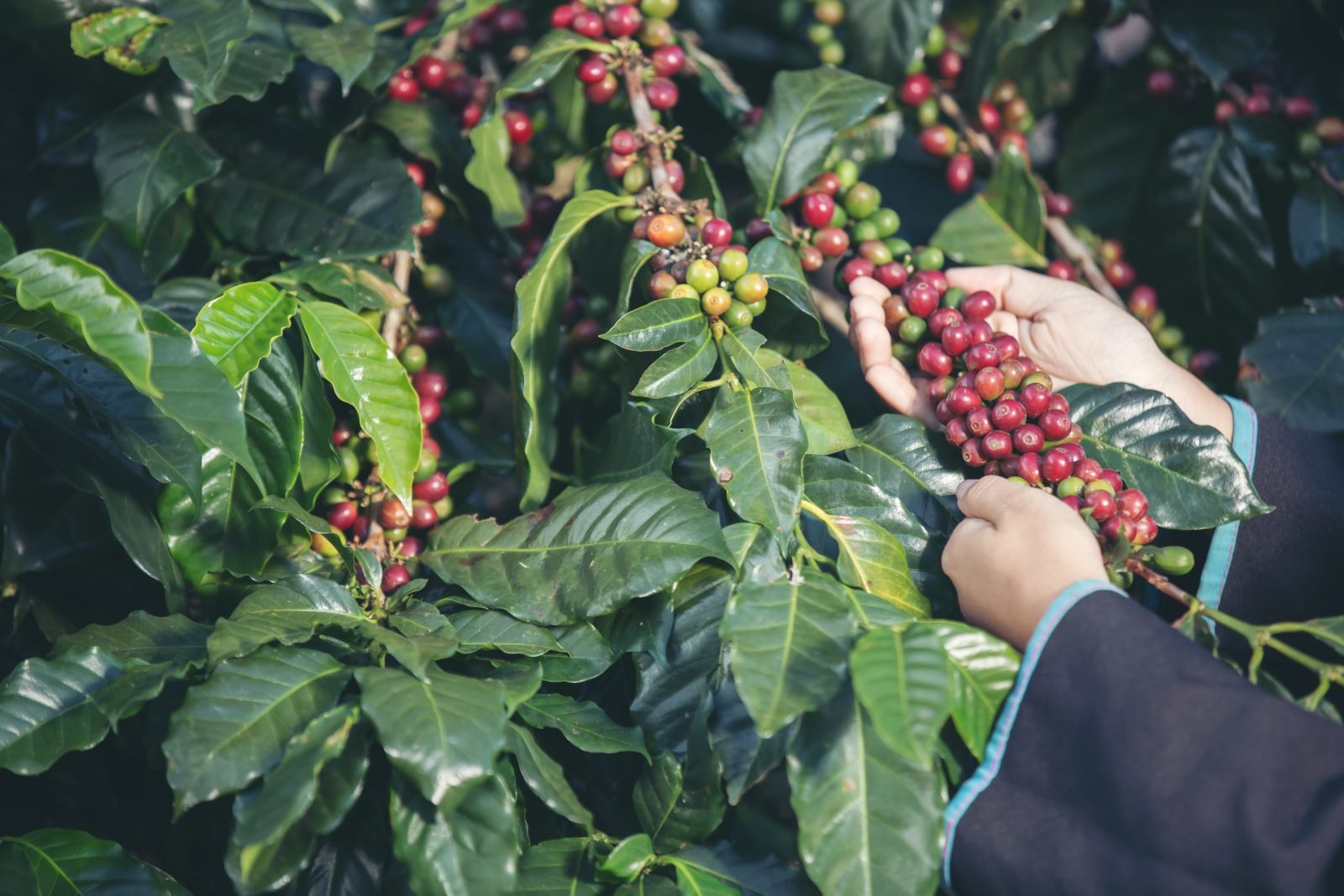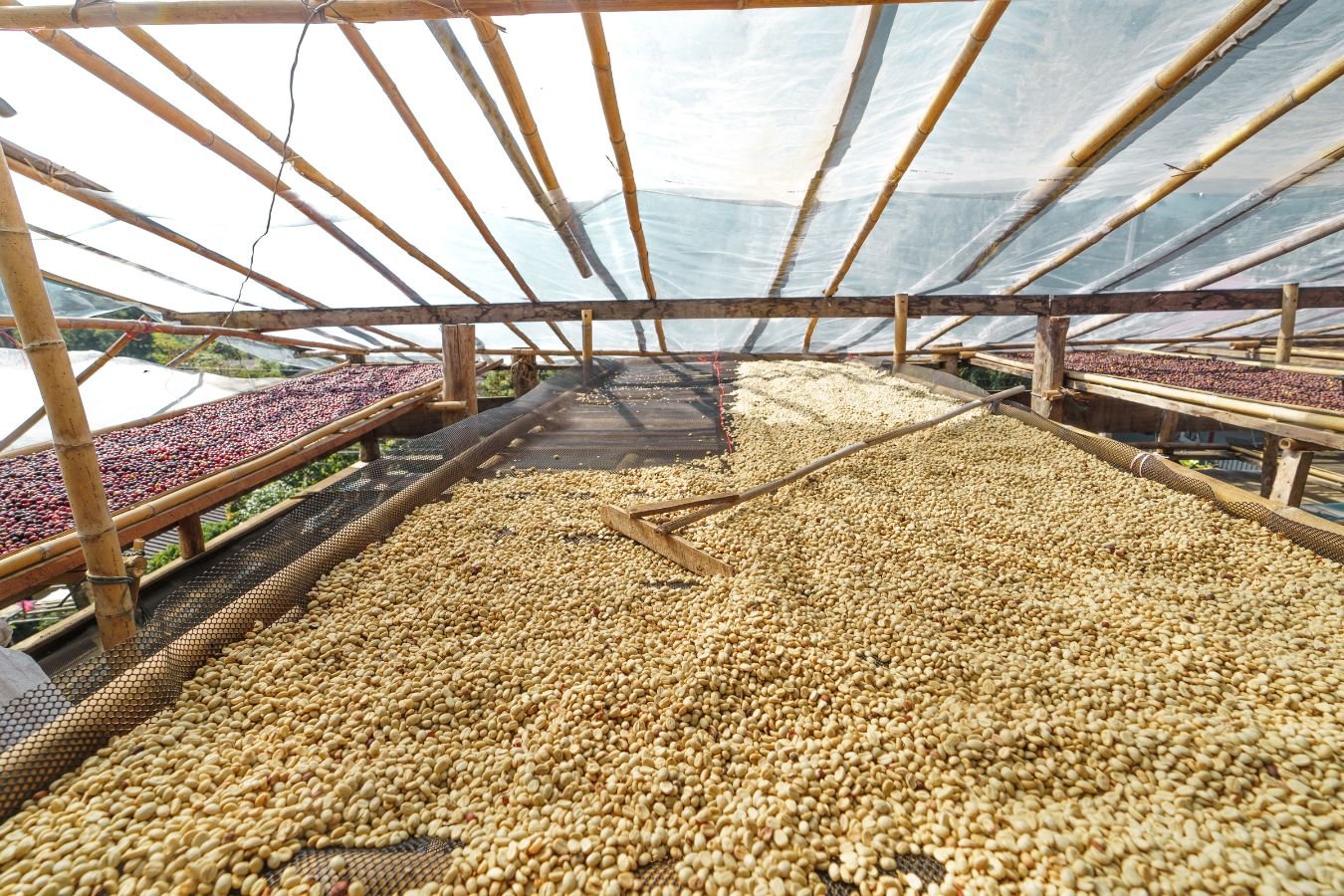Raw Coffee Beans: From Farm to Cup – The Enchanting Path of Fresh Flavors

Overview of the Enchanting Journey of Raw Coffee Beans from Farm to Cup
Raw coffee beans make an enthralling trip from the coffee farms where they are grown to the cups of coffee connoisseurs all over the world. This article delves into the numerous stages of this process, shining light on the intricate techniques that go into making a delicious cup of coffee.
Also Read: Here are 3 Sumatra Coffee Exporters and Indonesia’s Best Coffee Farmers
Table of Contents
Understanding the journey of raw coffee beans is crucial for coffee enthusiasts as it deepens their appreciation for the craft and artistry behind each cup. By comprehending the cultivation, processing, and brewing methods, coffee lovers can develop a discerning palate and make informed choices when selecting and enjoying their coffee.
This article aims to provide a thorough overview of the enthralling journey of raw coffee beans, including insights into the production, processing, and brewing procedures involved. Its goal is to educate and engage coffee lovers, creating a greater understanding for the intricate process that brings their favourite beverage to life.
Cultivation and Harvesting
Coffee Plant Varieties and Their Cultivation Requirements: Coffee plants are classified into several species, the most common of which are Arabica and Robusta. Each cultivar has unique growth requirements, including as optimal temperature, altitude, and soil conditions. Arabica flourishes at higher elevations and in milder climates, whilst Robusta can tolerate lower elevations and warmer climates.
The Role of Climate and Soil in Coffee Farming: Climate and soil are critical factors in coffee farming. A mix of consistent rainfall, sufficient sunshine, and warm temperatures is perfect for coffee cultivation. Furthermore, optimal coffee plant growth requires well-drained, nutrient-rich soil.
Techniques for Sustainable and Responsible Coffee Cultivation: Coffee producers use a variety of approaches to encourage sustainable practices. Shade-grown farming, which helps to preserve biodiversity, organic farming methods to limit chemical inputs, and water conservation strategies are among them. Fairtrade and ethical sourcing initiatives also ensure that farmers are fairly compensated for their efforts.

Harvesting Methods and the Importance of Selective Picking : To achieve optimal flavour development, coffee cherries are plucked selectively at the peak of ripeness. Selective picking entails hand-picking just ripe cherries, as unripe or overripe cherries might degrade the quality of the beans. This painstaking process necessitates specialized labour and helps to the exceptional flavour of speciality coffees.
Also Read: Exploring the Regions Where Coffee Beans Grow Best
Processing and Preparation
The Different Processing Methods: Washed, Natural, Honey
- Washed (Wet) Processing:
The most frequent and commonly used approach is washed processing. The coffee cherries are sorted and de-pulped after harvesting to remove the outer skin. The residual mucilage (sticky layer) is washed mechanically or fermentatively by washing the beans. As a result, the beans are clean and vibrant. They are then either sun-dried on patios or dried mechanically. Coffees with washed processing often have stronger acidity, clearer flavours, and a lighter body. - Natural (Dry) Processing:
The oldest and most traditional type of coffee processing is natural processing, often known as dry processing. The ripe coffee cherries are spread out on raised beds or patios to dry, with the fruit remaining intact after harvesting. The cherries are tossed frequently during drying to prevent mould or fermentation. The outer skin and flesh of the dried cherries are removed to reveal the coffee beans. Natural processing frequently gives stronger fruit aromas to the coffee, resulting in a fuller body, lower acidity, and a distinct sweetness. - Honey Processing:
Honey processing, also known as pulped natural processing, incorporates both washed and natural processing features. The outer skin of the coffee cherries is removed after harvesting (depulping), but a part of the sticky mucilage is purposefully left on the beans. After that, the mucilage-covered beans are dried either on patios or in mechanical dryers. The term “honey processing” refers to the golden tint of the mucilage, which resembles honey. The amount of mucilage on the beans varies, resulting in varying degrees of sweetness and flavour complexity. Coffees with honey processing might have a medium body, balanced acidity, and distinct fruity or floral flavours.
Depulping and Fermentation Stages
The outer skin and pulp of the coffee cherry are mechanically removed during the depulping process. After depulping, the beans are fermented and steeped in water to eliminate any leftover mucilage. The period of fermentation influences the flavour development of the beans.
Drying and Sorting the Raw Coffee Beans
Once fermented, the beans are dried to reduce moisture content. This can be done using natural sun-drying methods or mechanical dryers. Proper drying is crucial to prevent mold or moisture-related defects. After drying, the raw coffee beans are sorted based on size, shape, and quality to ensure uniformity and consistency.

Quality Control Measures During Processing
Strict quality control methods are applied throughout the processing steps to ensure the integrity of the raw coffee beans. This includes regular sampling and cupping to examine the sensory characteristics of the beans and identify any abnormalities. Only the finest beans get to the next stages of the coffee journey, thanks to quality control.
Also Read: The Timeline and History of Coffee in Indonesia
Conclusion
The journey of raw coffee beans from farm to cup encompasses cultivation, harvesting, processing, and brewing, showcasing the meticulous efforts invested in creating a delightful coffee experience.
By gaining insights into the intricacies of coffee production, readers can develop a profound appreciation for the craftsmanship and dedication of coffee farmers, processors, and brewers.
The enchanting path of raw coffee beans invites coffee enthusiasts to savor the flavors, explore brewing techniques, and foster a deeper connection with the beverage they cherish. Embracing the journey from farm to cup enriches the coffee-drinking experience and fuels a lifelong passion for the world of coffee.











